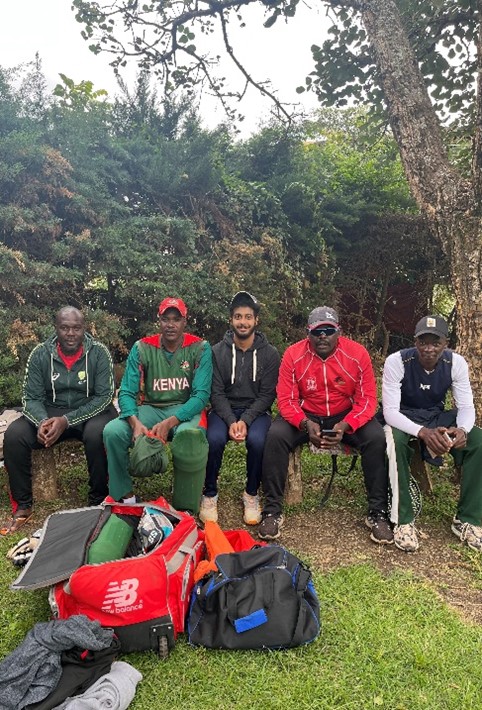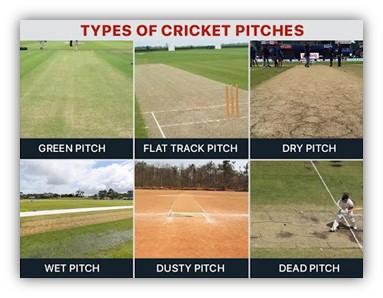Mourya Viswanadha
Little did I know that my passion for cricket and storytelling would not only lead me to new opportunities but also unite me with a like-minded individual, Roger F. Malina
My name is Mourya Viswanadha, and I am currently pursuing my master’s in information technology and management at the University of Texas at Dallas. Before my academic pursuits in the United States, I had a cricketing background and cricket has been an integral part of my life. I played professionally in India, representing various age groups for my state side and engaging in club cricket in Hyderabad. Recently, I participated in a Cricket league conducted by the Nairobi Provincial Cricket Association in Kenya before moving to the States to pursue both my academic and cricketing aspirations. As a passionate cricketer and a student of science and technology, my path has been shaped by the love for cricket, Intersection of technology and storytelling, and the pursuit of knowledge.

Upon my arrival at the University of Texas at Dallas, it was pure coincidence I ran upon Roger F. Malina at the ArtSciLab, a nexus where the arts and sciences converge to explore innovative collaborations. Roger F. Malina, a distinguished physicist, astronomer, and Executive Editor of Leonardo Publications at MIT Press, is renowned for his work focusing on connections among digital technology, science, and art. As an individual deeply interested in the intersection of technology and storytelling, I pitched my idea for a virtual reality immersive project titled “Qualia: Can Conscious Storytelling Transform Us?” to Roger F. Malina. To my delight, he approved the project, and it became my current focus at the lab.

But what does cricket have to do with our connection? Surprisingly, Roger F. Malina’s own journey involves cricket. He had played cricket in the UK when he was ten years old, with his first match dating back to 1960. Coincidentally, I also started playing cricket at the age of ten. This shared passion for the sport served as the initial spark for our connection, paving the way for discussions beyond cricket and into the realms of science, technology, and storytelling.

As a left-handed batsman and leg-spinner, I’ve always been fascinated by the intricate physics of cricket. From the aerodynamics of a cricket ball in flight to the biomechanics of a batsman’s swing, cricket is a sport deeply rooted in scientific principles. As a science student, I can tell you cricket involves a lot of physics.
Cricket, a sport beloved by millions around the world, is not just a game of bat and ball; it’s a showcase of fundamental physics principles in action. From the moment the ball leaves the bowler’s hand to the precise timing of a batsman’s shot, every aspect of cricket can be analyzed through the lens of physics.
For instance, consider the trajectory of a spinning cricket ball. As a leg-spinner, I manipulate the ball’s rotation to generate drift and spin, exploiting the Magnus effect to deceive batsmen. The spin imparted on the ball causes it to deviate from its straight path through the air, a phenomenon known as the Magnus effect. This effect arises due to the difference in air pressure on the two sides of the spinning ball.

Moreover, the collision between bat and ball is a perfect demonstration of Newton’s laws of motion. When a batsman strikes the ball, the force exerted on it determines its speed and direction. According to Newton’s second law, the force applied is proportional to the rate of change of momentum, resulting in the ball’s acceleration. This acceleration, combined with the elasticity of the ball and the bat, dictates the resulting trajectory of the ball after impact. Batsmen aim to time their shots perfectly to maximize the transfer of momentum and send the ball to the boundary.
Furthermore, the conditions of the pitch play a significant role in determining the behavior of the ball. A dry and dusty pitch offers more friction, allowing spin bowlers to grip the ball better and extract more turn. On the other hand, a wet or grassy pitch reduces friction, favoring fast bowlers who rely on pace and bounce. Bowlers must adapt their strategies based on the conditions of the pitch to maximize their effectiveness.

In conclusion, cricket is not just a game of skill and strategy; it’s a fascinating playground for exploring the laws of physics. By delving into the physics of cricket, players and enthusiasts alike gain a deeper understanding of the intricacies of the game and the scientific principles governing it. So, the next time you watch a cricket match, take a moment to appreciate the physics behind every delivery, every shot, and every wicket.
Beyond my academic and cricketing pursuits, I am also fortunate to work under Roger F. Malina as an Operations Coordinator for the Sigma Xi group, a prestigious scientific research honor society. This role allows me to further delve into the world of scientific research, complementing my passion for storytelling and technology.
Our shared appreciation for the physics of cricket has not only deepened our bond but also fostered collaborative discussions within the ArtSciLab. By integrating our insights from cricket into my immersive storytelling project, titled “Qualia: Can Conscious Storytelling Transform Us?”, we aim to explore the parallels between the art of technology and storytelling, unveiling new perspectives on human perception and consciousness.
In conclusion, cricket has served as a unifying force, bringing together individuals from diverse backgrounds to explore common passions and forge meaningful connections. Through our shared journey, Roger F. Malina and I continue to bridge the gap between sports, science, and technology, demonstrating the profound impact of interdisciplinary collaboration in unlocking new avenues of exploration and discovery.
